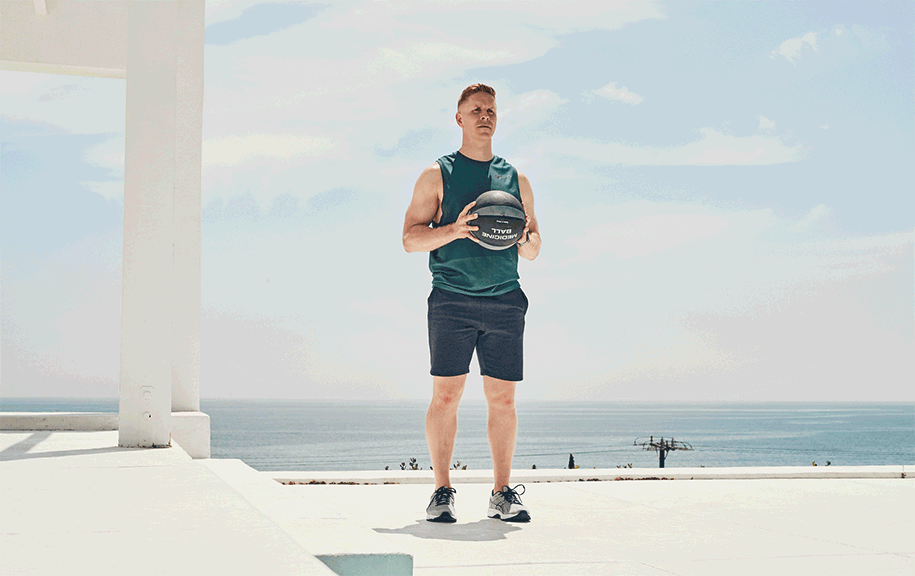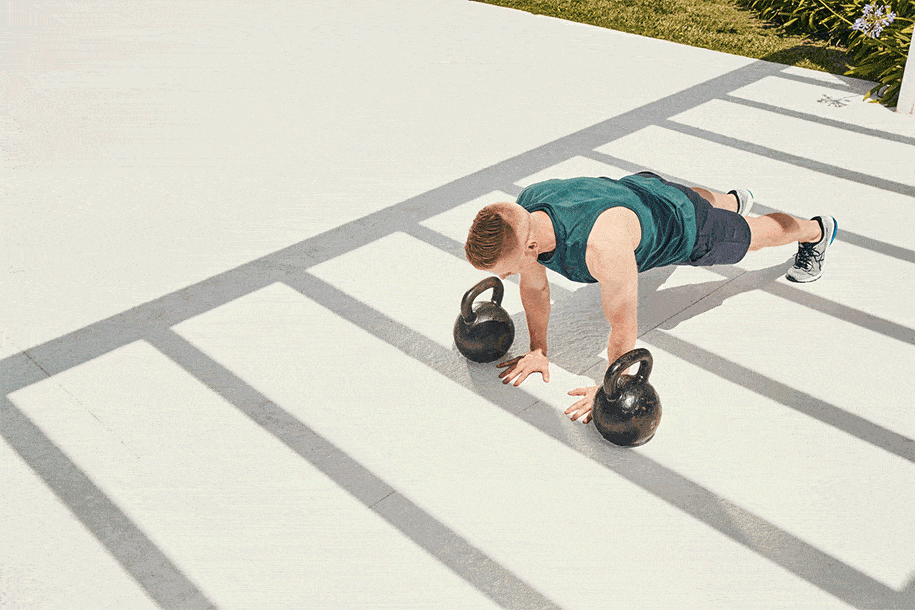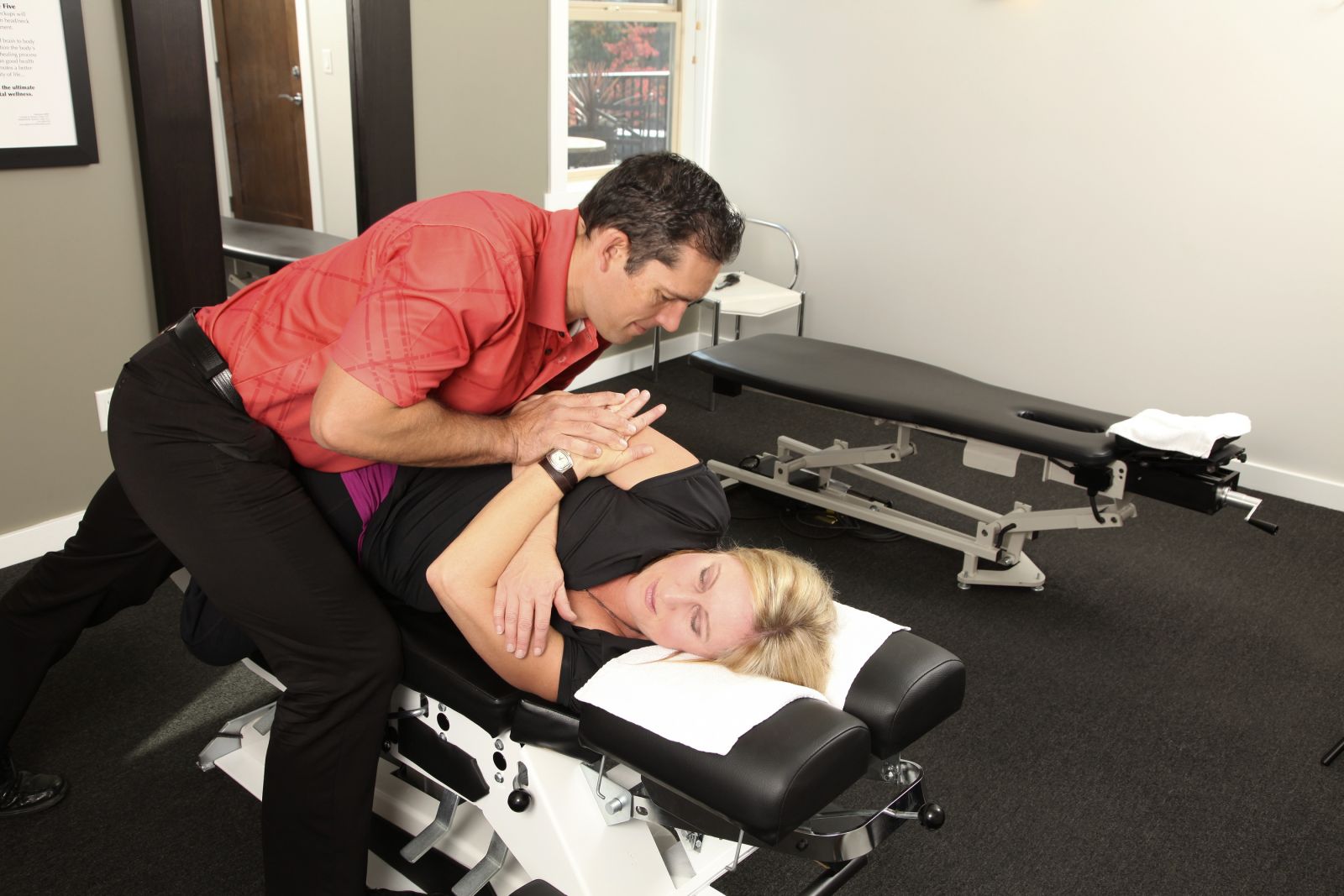
Hop outside, get your heart rate up, and strengthen your entire body.
Most plyometric exercises will help improve your speed, power, and reaction time. But this new workout from Dan Daly, a Tier X coach at Equinox Columbus Circle in New York City, takes the explosive moves further.
Daly incorporated single-leg training to enhance your balance and core stability, lateral movement to get you comfortable working in multiple planes of motion, and extra resistance to create more force, increasing the power-building benefits.
Plus, the routine hits multiple muscle groups. “People often default to lower-body moves, but this technique is really useful all over,” says Daly.
Start with a 10- to 20-minute warm-up. First, roll out your muscles with a foam roller, then do a light stretch and perform some dynamic exercises, slowly upping your intensity until you feel fully prepped.
Then, complete all the reps of the first exercise at a high intensity, followed by 1 minute of active recovery; repeat 3 times, and then move on to the next move. Once you’re finished, stretch out the muscles you just worked.
For best results, you should perform this workout no more than twice a week.

Ball slam with lateral shuffle
Stand with feet shoulder-width apart, knees slightly bent, holding a medicine ball with both hands in front of chest, elbows bent by sides. Lift ball straight overhead, stretch, and then quickly slam the ball down to the ground as you shuffle to the left and back to center just in time to catch the ball. Do 5 reps; switch sides and repeat.

Lateral hop to chest pass
Stand with feet hip-width apart and staggered (left foot in front of right), knees slightly bent, holding a medicine ball with both hands in front of you, elbows bent by sides. Quickly hop out to right with right foot, moving left foot behind you, as you lower ball to outside of right hip. Immediately pivot and hop left foot out to left, as you rotate torso through center and perform a forward chest pass, tossing the ball over to your left. Do 5 reps; switch sides and repeat.

Kettlebell clean to forward lunge
Stand with feet hip-width apart and staggered (left foot in front of right), knees slightly bent, holding a kettlebell in front of your right shoulder, elbow bent by side, left arm extended out to side. Bring left arm forward, then back as you hinge forward from hips, swing kettlebell between legs, and then explode off your right foot into a forward lunge and clean (swinging kettlebell back up in front of shoulder). Do 5 reps; switch sides and repeat.

Single-Leg Lateral Depth Jump
Stand on a low step (or box), with feet shoulder-width apart, arms extended by sides. Bend knees slightly, and then hop sideways to the left off the step, landing on your right foot, with left foot lifted. Immediately bound out to left, landing on your left foot, with right foot lifted behind you. Do 5 reps; switch sides and repeat.

Lunge Pivot to Chest Pass
Stand to the right of a step (or low box) with feet hip-width apart, knees slightly bent, holding a medicine ball in front of chest, elbows bent by sides. Lunge forward with left leg, immediately pivot and turn toward step, then lunge forward with right leg, placing foot on step, as you use both hands to pass medicine ball to someone in front of you. Do 5 reps; switch sides and repeat.

Ball Slam with Lateral Shuffle
Stand with feet shoulder-width apart, knees slightly bent, holding a medicine ball with both hands in front of chest, elbows bent by sides. Lift ball straight overhead, stretch, and then quickly slam the ball down to the ground as you shuffle to the left and back to center just in time to catch the ball. Do 5 reps; switch sides and repeat.
For full article written by Lindsey Emery visit https://furthermore acheter viagra en ligne.equinox.com/articles/2018/08/amped-up-plyo



 While the mainstay of chiropractic is spinal manipulation, chiropractic care now includes a wide variety of other treatments, including manual or manipulative therapies, postural and exercise education, ergonomic training (how to walk, sit, and stand to limit back strain), nutritional consultation, and even ultrasound and laser therapies. In addition, chiropractors today often work in conjunction with primary care doctors, pain experts, and surgeons to treat patients with pain.
While the mainstay of chiropractic is spinal manipulation, chiropractic care now includes a wide variety of other treatments, including manual or manipulative therapies, postural and exercise education, ergonomic training (how to walk, sit, and stand to limit back strain), nutritional consultation, and even ultrasound and laser therapies. In addition, chiropractors today often work in conjunction with primary care doctors, pain experts, and surgeons to treat patients with pain.










